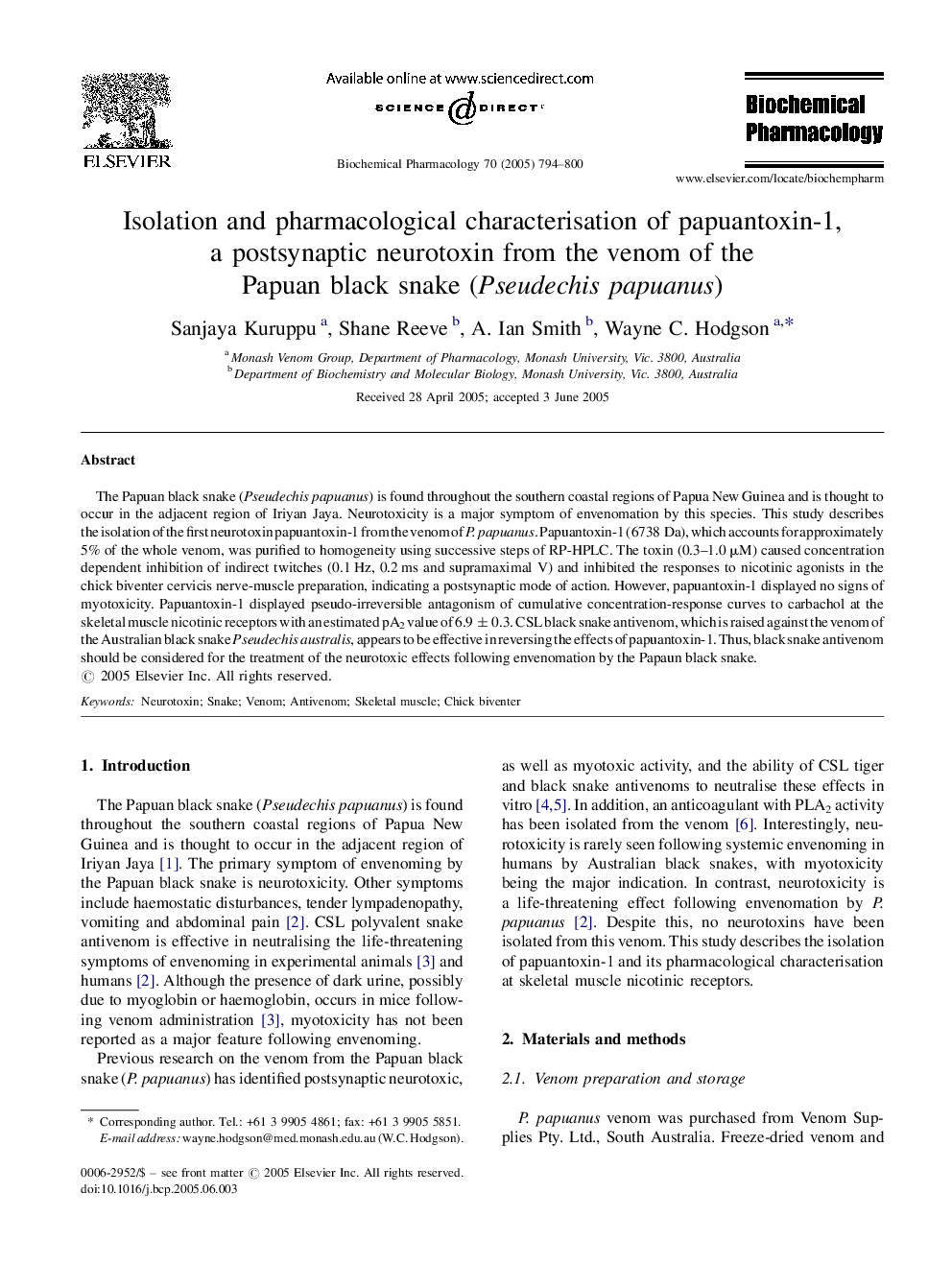| Article ID | Journal | Published Year | Pages | File Type |
|---|---|---|---|---|
| 9001906 | Biochemical Pharmacology | 2005 | 7 Pages |
Abstract
The Papuan black snake (Pseudechis papuanus) is found throughout the southern coastal regions of Papua New Guinea and is thought to occur in the adjacent region of Iriyan Jaya. Neurotoxicity is a major symptom of envenomation by this species. This study describes the isolation of the first neurotoxin papuantoxin-1 from the venom of P. papuanus. Papuantoxin-1 (6738 Da), which accounts for approximately 5% of the whole venom, was purified to homogeneity using successive steps of RP-HPLC. The toxin (0.3-1.0 μM) caused concentration dependent inhibition of indirect twitches (0.1 Hz, 0.2 ms and supramaximal V) and inhibited the responses to nicotinic agonists in the chick biventer cervicis nerve-muscle preparation, indicating a postsynaptic mode of action. However, papuantoxin-1 displayed no signs of myotoxicity. Papuantoxin-1 displayed pseudo-irreversible antagonism of cumulative concentration-response curves to carbachol at the skeletal muscle nicotinic receptors with an estimated pA2 value of 6.9 ± 0.3. CSL black snake antivenom, which is raised against the venom of the Australian black snake Pseudechis australis, appears to be effective in reversing the effects of papuantoxin-1. Thus, black snake antivenom should be considered for the treatment of the neurotoxic effects following envenomation by the Papaun black snake.
Related Topics
Health Sciences
Pharmacology, Toxicology and Pharmaceutical Science
Pharmacology
Authors
Sanjaya Kuruppu, Shane Reeve, A. Ian Smith, Wayne C. Hodgson,
